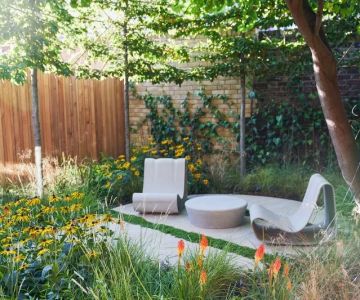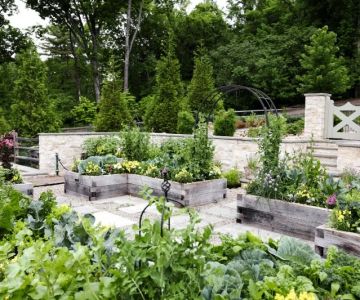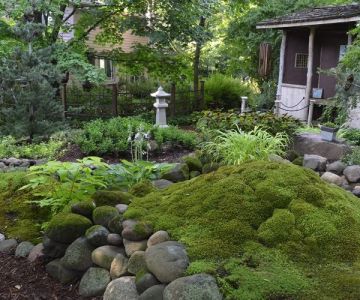
- #Using-Perennial-Borders-to-Frame-Walkways - perennial borders - landscape design ideas
- #Creating-Beautiful-Walkway-Framing - walkways with plants - garden path design
- #Tips-for-Designing-Perennial-Borders - perennial plant choices - enhancing curb appeal
- #Finding-the-Best-Perennial-Plants - perennial garden plants - Beautiful Landscapes recommendations
Using Perennial Borders to Frame Walkways
1. When it comes to landscaping, framing walkways with perennial plants offers both beauty and functionality. Perennials are a smart choice because they come back year after year, providing lasting appeal with minimal maintenance. Using these plants to border your walkways not only enhances the aesthetic value of your garden but also creates a natural flow that invites people to explore your outdoor space.
2. The key to successfully framing a walkway with perennials is selecting plants that can thrive in the conditions along the path. For sunny walkways, consider vibrant flowers like lavender, coneflowers, or daylilies, which can handle the full sun and bloom throughout the growing season. In contrast, if your walkway is shaded, hostas, ferns, and astilbes will thrive in lower light and add a lush, textured look to the area.
3. One of the major advantages of perennial borders is their ability to create visual interest and define the space. A well-chosen border can complement the architectural design of your home, add a pop of color, and soften the edges of the path. Whether you prefer a more structured, formal look with neatly clipped hedges or a relaxed, cottage-style border with wildflowers, perennials provide the flexibility to match your aesthetic vision.
Creating Beautiful Walkway Framing
1. When designing perennial borders to frame your walkway, start by considering the width and shape of your path. A narrow walkway can be enhanced by planting compact perennials with a low profile, such as creeping thyme or lavender, which add fragrance and color without overwhelming the space. Wider walkways, on the other hand, can accommodate taller plants like delphiniums or ornamental grasses, which provide height and a sense of structure to the design.
2. Another important consideration is the layering of plants. By arranging your perennials in layers, you can create depth and texture. Place the tallest plants in the back of the border (farthest from the walkway), with mid-height plants in the middle, and low-growing varieties at the front. This arrangement ensures that all plants are visible and contributes to a natural, flowing design.
3. Timing is also essential when planning perennial borders. Many perennials bloom at different times, so a smart strategy is to choose plants that bloom in succession, ensuring that your walkway is framed with color throughout the growing season. For instance, early bloomers like tulips can give way to summer favorites like black-eyed Susans, followed by late-season asters or mums. This extended bloom period adds a dynamic, ever-changing element to your garden.
Tips for Designing Perennial Borders
1. Consider the soil type and drainage in your walkway area when choosing perennials. Some plants thrive in well-drained soil, while others prefer slightly moist conditions. Knowing your soil type will help ensure the longevity of your perennial border and prevent plant stress or failure. You can also amend the soil with organic compost to improve fertility and drainage, creating a healthy environment for your plants to grow.
2. Think about the maintenance level you are willing to commit to. While perennials are relatively low-maintenance, certain varieties require more attention than others. For example, plants like daylilies and lavender are known for being hardy and easy to care for, while others, such as peonies, may need to be staked or divided every few years. Choose plants that suit your level of commitment to maintenance.
3. Incorporating mulch around the plants in your perennial border can help retain moisture, suppress weeds, and keep the soil temperature stable. Organic mulches, such as bark or wood chips, can also add texture and complement the look of your walkway. Be sure to replenish the mulch annually to maintain its effectiveness.
Finding the Best Perennial Plants
1. When selecting perennials for your walkway border, it’s important to choose plants that will not only thrive in your local climate but also complement the surrounding environment. If you are unsure of the best options for your area, consider visiting local nurseries or consulting online sources like Beautiful Landscapes for recommendations on perennials that are ideal for framing walkways. These sources can help you find plants that are suited to your specific needs, whether you’re looking for drought-tolerant varieties or ones that attract pollinators.
2. Some popular perennial plants for walkways include:- Lavender: Known for its fragrance and beautiful purple flowers, it works well in sunny spots.- Coneflowers: These hardy plants offer vibrant color and are loved by pollinators.- Hostas: Perfect for shady areas, hostas add texture and greenery to borders.- Sedum: A low-maintenance, drought-tolerant plant that provides interest in both summer and fall.
3. By selecting the right perennials and designing thoughtful, layered borders, you can create a stunning walkway that enhances the beauty of your landscape and offers lasting enjoyment. Whether you’re looking to add color, texture, or definition to your path, perennial borders are a timeless and rewarding choice.









 Cortez and Acevedo Landscaping and Tree Services5.0 (3 reviews)
Cortez and Acevedo Landscaping and Tree Services5.0 (3 reviews) Hernandez Lawn care LLC5.0 (3 reviews)
Hernandez Lawn care LLC5.0 (3 reviews) Signature Homes By WG Inc.5.0 (18 reviews)
Signature Homes By WG Inc.5.0 (18 reviews) Fresh Cut Pros, Inc4.0 (135 reviews)
Fresh Cut Pros, Inc4.0 (135 reviews) Peoria Brick Company - East Peoria4.0 (29 reviews)
Peoria Brick Company - East Peoria4.0 (29 reviews) Double A Supply4.0 (26 reviews)
Double A Supply4.0 (26 reviews) How to Create a Butterfly Pathway Through Your Garden: A Step-by-Step Guide
How to Create a Butterfly Pathway Through Your Garden: A Step-by-Step Guide How to Plant Shrubs for Continuous Bloom – Tips for Year-Round Garden Beauty
How to Plant Shrubs for Continuous Bloom – Tips for Year-Round Garden Beauty How to Plant for Delayed Blooming to Extend Season
How to Plant for Delayed Blooming to Extend Season How to Landscape for Seasonal Wildlife Attraction in Your Garden
How to Landscape for Seasonal Wildlife Attraction in Your Garden How to Maintain Stone and Brick Pathways Effectively
How to Maintain Stone and Brick Pathways Effectively How to Landscape a Rooftop Garden for Relaxation | Beautiful Rooftop Designs
How to Landscape a Rooftop Garden for Relaxation | Beautiful Rooftop Designs